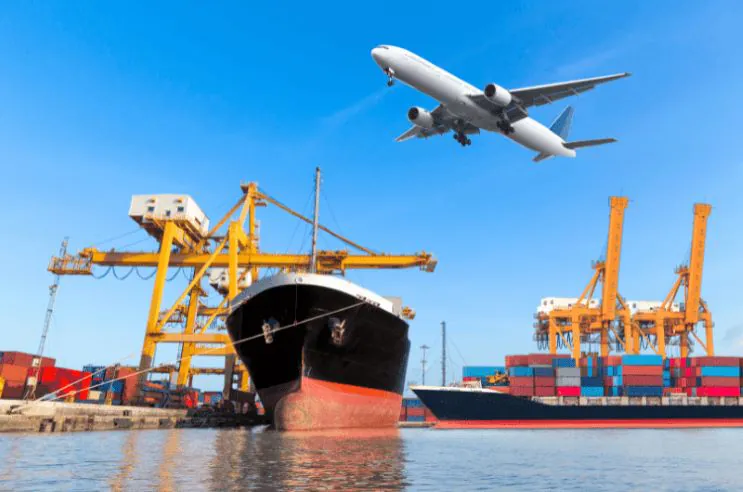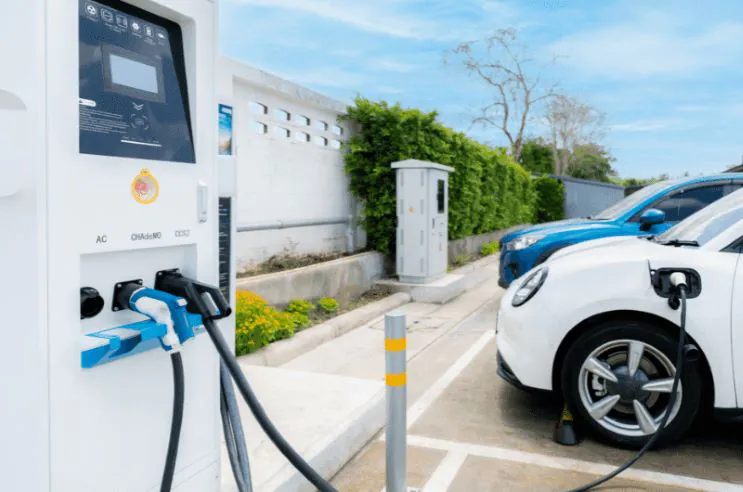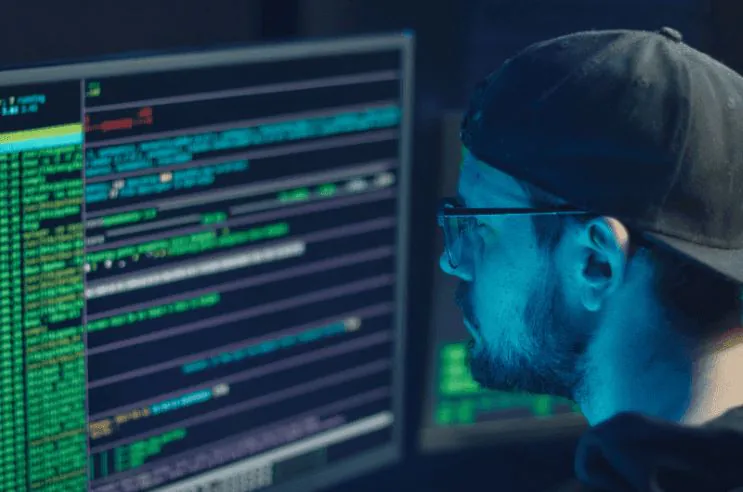From Cybersecurity Threats to Driver Shortages: Exploring 4 Current Challenges in Transportation
The transportation and logistics sector encounters several difficulties that test the adaptability and resilience of global companies. The industry faces challenges that call for creative solutions, from geopolitical tensions that impede important trade routes to the growing threat of cyberattacks in a world that is becoming more digitally connected. Find out how to face the biggest current challenges in international transportation within your company.

Source: www.canva.com
1. Supply Chain Disruptions
Disruptions in the supply chain have become a major problem for organizations globally as they have a substantial effect on production, distribution, and operational efficiency. The confluence of variables including the COVID-19 pandemic’s aftereffects, political tensions, and bottlenecks have presented global supply networks with previously unseen difficulties. While some of these difficulties have been resolved, others persist through 2024. Let’s talk about some of those disruptions.
Russia-Ukraine war
The war between Russia and Ukraine has had significant negative impacts on the maritime sector among other things. The conflict directly disrupted maritime activities in the Black and Azov Seas. It led to the suspension of Ukrainian port operations and the export of agricultural products. Both the Black Sea and the Azov Sea are significant transportation hubs. The Black Sea region was the second-largest grain-exporting region in the world in 2021 with 111.2 million tons of transported cargo.
Another negative impact is the partial closure of airspace over Russia and Belarus for flights from 36 countries (including all 27 countries from the European Union) that have imposed sanctions on them. This leads to route changes, extensions, and subsequent increases in transportation costs. Additionally, about 500 businesses have announced their decision to cease operations in Russia due to the war. Many players in the automotive industry such as BMW and Mercedes-Benz have suspended their operations in Russia. Moreover, the war also negatively affects the price of fuels, as Russia is the main supplier of not only gas but also oil and coal for the EU.
Red Sea Geopolitical Tensions
The Suez Canal, which is the shortest sea route connecting Asia and Europe that typically handles 15% of all maritime trade, saw a decrease in traffic since November 2023 due to attacks on cargo ships in the Red Sea region. The attacks are caused by geopolitical tensions in relation to the Israel-Hamas war, with Iran-backed Houthi rebels targeting cargo ships they suspect are associated with Israel. Several shipping firms rerouted their cargo ships to pass the Cape of Good Hope. Businesses with low inventory suffered due to the average increase in delivery times of 10 days or more. Trade passing through the Suez Canal decreased by 50% compared to the previous year, whereas trade passing around the Cape of Good Hope increased by an estimated 74% above the previous year’s level (imf.org, Parisa Kamali, 2024).
Tip: Find out more about the Suez Canal in our article.

Source: www.canva.com
Drying up the Panama Canal
Since October 2023, a severe drought at the Panama Canal has compelled authorities to implement measures. They have greatly decreased the number of daily ship crossings, lowering maritime trade through another crucial chokepoint. The Panama Canal typically accounts for almost 5% of the world’s maritime trade. As a result, the volume of trade passing through the Panama Canal decreased by over 33% compared to the previous year (hida.org, 2024).
Avoid Disruption of your Supply Chain
Avoid disruptions by utilizing these techniques:
- Diversify your supply chains: Stop relying solely on one supplier and start collaborating with multiple. In addition to regional suppliers, consider sourcing options from different countries or regions. Also, do not forget to fortify your bonds with suppliers and logistical partners.
- Enhance inventory control: Invest in inventory management software to track inventory levels and monitor stock movements.
- Keep an eye on supply chain risks: Analyze them regularly. Determine possible risks to your business, such as interruptions in supply, shifts in demand, or geopolitical instabilities. Evaluate their impacts on your business.
By putting these techniques into practice, you can help better manage supply chain interruptions and preserve continuity in an increasingly unstable business environment.

Source: www.canva.com
2. Environmental Demands
Sustainability has developed into much more than just a big trend in recent years, affecting almost every business. Businesses in the international transportation and logistics sector have many opportunities and obstacles to deal with due to environmental requirements. By 2024, environmentally responsible logistics will have evolved into a crucial component of economic success. Making the switch to sustainable practices is not only the right thing to do, but it also creates new possibilities for savings and an improved reputation.
However, this change calls for significant financial outlays as well as operational adjustments, such as fleet modernization and the use of green technology. Companies must strike a balance between operational effectiveness and environmental responsibility to comply with regulations and continue to be profitable and competitive.
Alternative Fuels
Energy sources known as alternative fuels can replace conventional fossil fuels like coal, oil, and gas, at least in part. It’s critical to remember that not all substitute fuels are environmentally friendly. Two examples of alternative fuels derived from fossil fuels are compressed natural gas (CNG) and liquefied natural gas (LNG). Nevertheless, they are thought to burn cleaner, produce fewer greenhouse gas emissions, and contribute to the energy transition. These fuels may seem greener at first, but in the end, they’re not.
Liquid biofuels with nearly zero carbon will need to be sustainable to cut greenhouse gas emissions from transportation, shipping, and aircraft in half by the year 2050. Sustainable biofuels have the potential to replace up to 15.5 million barrels of crude oil used in transportation every day, or 25% of the energy required for transportation today (theicct.org, 2023). To be genuinely sustainable, alternative fuels must originate from renewable resources that have no detrimental effects on the environment or public health. The most prominently known alternative fuels nowadays are:
- Biofuels: Plants and animal fat are organic components that are used to make biofuels. Ethanol and biodiesel, which are made from crops including corn, soybeans, and sugarcane, are the most widely used biofuels.
- Hydrogen: Fuel cell technology, which is incredibly efficient, converts hydrogen gas into energy while producing only water vapor as a byproduct. Hydrogen power can be generated infinitely for use on roadways from various sources, including water.
E-fuels: Synthetic fuels, also known as e-fuels, are created from carbon dioxide and water using electrolysis and other chemical reactions that are fueled by renewable energy sources. E-fuels are chemically identical to both liquid and gaseous fossil fuels.

Source: www.canva.com
Electric Vehicles
In the automobile sector, electric vehicles (EVs) are a game-changer since they provide a sustainable substitute for conventional combustion engine vehicles. Since EVs have no tailpipe emissions, they make a big difference in the fight against climate change and air pollution. The swift progress in battery technology has resulted in extended driving ranges and enhanced infrastructure for charging, mitigating range anxiety issues and permitting extended travel. Electric vehicles may make up as much as 20% of new car sales by 2025, and by 2040, they may make up almost all of new car sales. In 2023, 14% of all new cars sold were electric.
Tip: Read our article about the future of electromobility.
EVs are ideal for last-mile logistics in urban areas since they emit no emissions and are quiet. For example, we can already encounter electric cars delivering food or packages right to your doorstep. The technology will become completely carbon neutral as soon as more renewable energy becomes accessible. By 2030, DHL, one of the largest logistics businesses, plans to have 60% of its last-mile delivery vans run on electricity (dhl.com, 2021).
Tip: Find out more information about the challenges in last-mile delivery.

Source: www.canva.com
Get Greener in your Company
To enhance your company’s sustainability within the global transportation and logistics industry, concentrate on implementing more environmentally friendly methods while adhering to regulations. Accept electric vehicles (EVs) as the future of last-mile logistics in cities to drastically cut down on noise and pollution while satisfying consumer demand for more environmentally friendly modes of mobility. Improve the infrastructure for EV charging to facilitate their widespread adoption. How to do it?
- Install EV Charging Stations: Installing EV charging stations on your company’s property can encourage employees to use electric vehicles.
- Partner with Charging Network Providers: Working together with well-established charging networks, you can take advantage of their knowledge.
If your company is small and you feel that these adjustments are not for you, you can at least begin by using eco packaging. Your business may lower its environmental impact, obey rules, and stay competitive in the changing market by adopting sustainability.
3. Cybersecurity Threats
Cybersecurity threats are a major concern for logistics organizations in the current digital landscape since they may significantly limit their operations. There was a 72% increase in data breaches between 2021–2023 (forbes.com, Mariah St. John, 2024). The industry’s growing reliance on digital technologies for a range of purposes, including communication and supply chain management, raises the risk of cyberattacks.
Cyber threats and other exposures that compromise the confidentiality and integrity of sensitive data are considered security threats. The following is a summary of the most typical cybersecurity attack types which may put your business at risk.

Source: www.canva.com
Phishing
Phishing is the term used when an attacker tries to obtain the victim’s confidential data, such as passwords or credit card information. Attackers impersonate a trusted authority (e.g., banks, social networks, or government organizations) and distribute phishing messages. Phishing attacks most commonly occur through emails asking for payment card information. However, the use of chat on social networks is also not uncommon.
The top 10 brands in terms of total brand phishing event appearances in 2023 are shown below (blog.checkpoint.com, 2024):
- Microsoft (33%),
- Amazon (9%),
- Google (8%),
- Apple (4%),
- Wells Fargo (3%),
- LinkedIn (3%),
- Home Depot (3%),
- Facebook (3%),
- Netflix (2%),
- DHL (2%).
Distributed Denial of Service (DDoS)
In this form of cyber-attack, attackers attempt to disrupt or damage a website, network, or other online service by overwhelming it with a large volume of fake requests until the service is restricted or disrupted. How do attackers accomplish this? They use a botnet network comprised of zombie computers, sending many fake requests per second remotely.
Cyber attackers often carry out DDoS attacks on demand. Before 2023, there were only 20% of sites, compared to 2024 (five times increase), where people could order DDoS attacks (forbes.com, Mariah St. John, 2024).
Malware
Malware refers to any program or file that poses a risk to a computer user. Malware can take many different forms, such as ransomware, worms, Trojan horses, spyware, and adware. As of 2023, over 35% of malware was sent by email, making it the most frequent vector for malware. In a study, 94% of organizations have reported email security incidents. Business losses from email compromise were over US $2.7 billion in the United States in 2022. (forbes.com, Mariah St. John, 2024).

Source: www.canva.com
Avoid Cyberattacks in your company
In 2025, it’s expected that cybercrime will cost the world an astounding US $10.5 trillion. The average cost for finding and reporting a data breach is US $1.58 million for a US company. The typical data breach cost is on average US $1.3 million loss for the firm (ibm.com, 2023).
You should routinely evaluate third-party risks in your supply chain and impose data encryption, especially at integration points to prevent cyberattacks. Integration points are conceptual points where different parts of your supply chain connect, not only in terms of suppliers and other logistics partners but also in terms of different software systems. Thanks to attack surface monitoring software, you can find vulnerabilities in your supply chain network’s cloud solutions. If it happens, you need to have an incident response plan. It ensures that if an attack does happen, everyone knows exactly what to do and when to do it.
Regular penetration testing can help you keep your business as secure as possible. A penetration test is a controlled and monitored simulated attack on the computer system of your company or its parts. For example, it may focus on a specific web application. The goal of penetration testing is to identify and assess all deficiencies in cybersecurity and, based on that, determine steps to remedy them. In the end, it increases cybersecurity resilience and lowers the risk of supply chain attacks by assisting you in assessing reaction strategies and identifying hidden security threats. By putting these procedures into place, you may reduce operational disruption and proactively protect your company’s assets.
Do not forget to include training for your employees, such as penetration tests, password security workshops, phishing tests, and others to improve your business’s overall cybersecurity. By educating your employees, you may better position your company to defend itself against cyber risks by enabling them to identify and address them.
Tip: Cyberattacks are just one type of crisis your company can go through. Find out about other types of threads and how to prepare for them.
4. Truck Driver Shortages and Skills Gap
One of the biggest challenges facing the international transportation and logistics industry is a significant staff shortage. Companies in a variety of business sectors, such as transportation and warehousing, find it difficult to find suitable candidates for critical positions.
Truck driver shortages have gotten worse globally throughout 2023. According to a survey by the International Road Transport Union (IRU), nearly three million truck driver positions remain unfilled. Making up roughly 7% of all open job roles in the 36 evaluated countries from all over the world.

Source: www.canva.com
Skills gap
In the majority of the nations surveyed by IRU, at least 50% of road transport companies have significant difficulties finding qualified drivers. Many are also losing their current customers and income since they are unable to grow their businesses.
Tip: Train your warehouse workers in the proper way to achieve higher efficiency.
Aging
Truck drivers are aging. There was a study that examined aging trends in 36 countries around the globe. The results in Europe showed that just 5% of truck drivers are under the age of 25. That is a huge difference from the average of 12% overall. In the study, there were only two nations that had a higher percentage of drivers under the age of 25: China (17%) and Uzbekistan (25%).
Input Costs
The “school-to-wheel” gap, representing the transition from education or training to professional truck driving, is one of the industry’s main problems. This gap is compounded by various factors, including age requirements and financial barriers. For example, in several countries, the minimum driving age for international freight transport is still 21 or 22 years old. Also, getting a truck driver’s license is very costly due to the high expenditures of insurance, license, and training. For instance, obtaining a Certificate of Professional Competence and a truck driver’s license in France often costs EUR 5,250 which is more than three times the minimum monthly pay (iru.org, 2023).
Forecast of Truck Driver shortage
In 5 years, driver shortages are expected to double. Over 7 million truck driver jobs might be empty by 2028. Around 4.9 million empty truck driver positions are expected to be in China (20% of all positions) and 745,000 in Europe (17% of all positions). The most crucial scenario is expected in Turkey, where there may be 200,000 open truck driver positions, which might account for 28% of all open positions in the country (iru.org, 2023).

Source: www.canva.com
Avoid labor shortages in your company
You should make targeted recruitment and retention investments as well as provide competitive pay and benefits to prevent truck driver shortages. While addressing the skills gap through training programs, you should also broaden your recruitment sources to draw in a larger pool of candidates.




